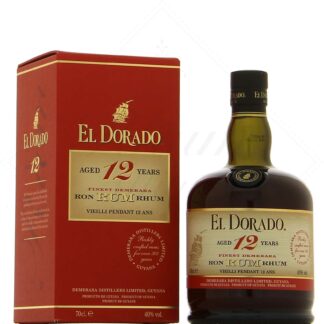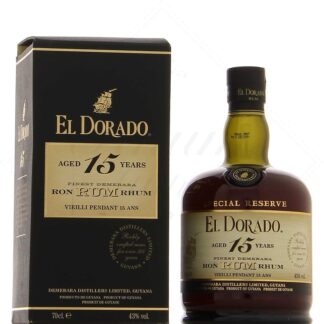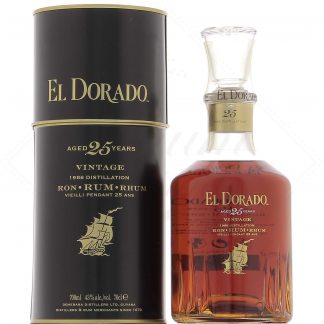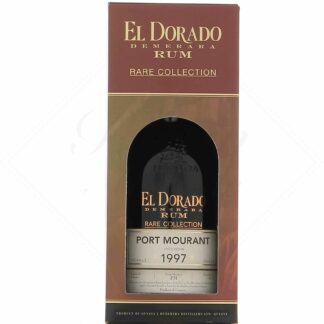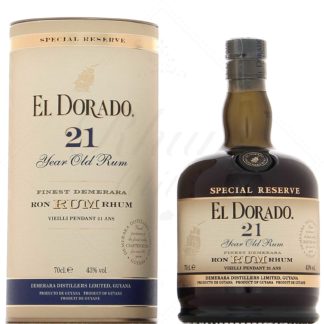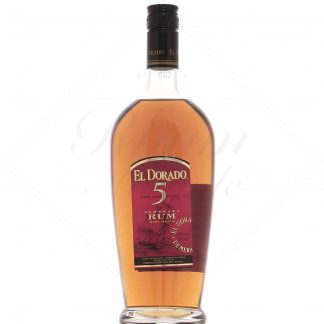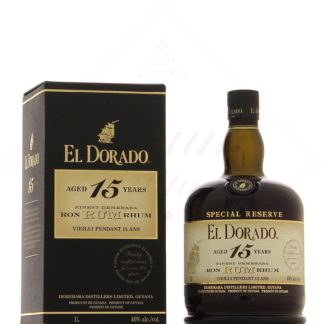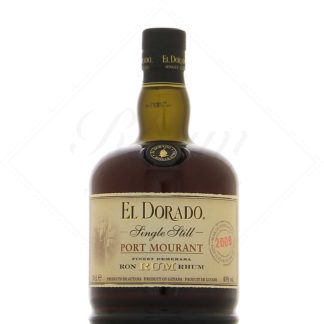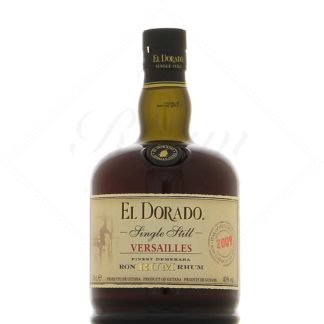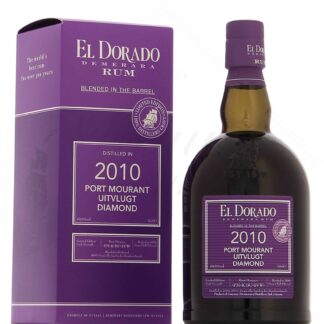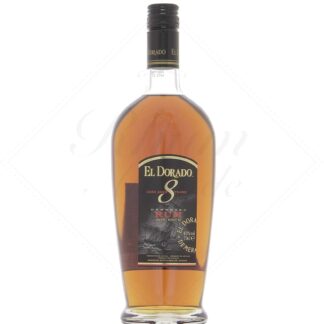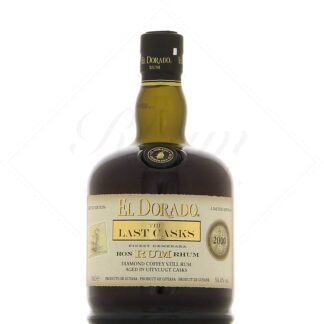El Dorado

The history of El Dorado rum
El Dorado is a rum brand from Guyana's mythical Demerara River region. It's a fairly recent brand, having been created in 1992, yet its history goes back to the earliest days of rum as we know it today.
In 1640, two Dutch colonies (Essequibo and Berbice, named after two rivers in the region) established their first plantations. The first distilleries went into operation in 1670. For the British Navy 's first blends in 1677, the English were already using rums from what was still known as Dutch Guiana.
The birth of Demerara rums
It wasn't until 1752 that a new colony appeared, that of Demerara. By 1780, the 3 colonies had more than 300 distilleries, each producing a different style of rum, designated by a "mark" on the barrels. In 1814, the British took control of the region and merged the 3 colonies to form British Guiana.
In 1834, at the time of l'abolition of slavery, British Guiana rums are still used by the Navy, but also by "colonial" rum brands. colonial" rum brands. In l'OVD blend (Old Vatted Demerara) blend, rum from the Port Mourant already already.
The 20th century saw a sharp fall in the price of sugar, leading to the closure of many distilleries, so that by 1942 there were only 9 left. Fortunately, some stills from these closed distilleries were preserved and concentrated in the remaining plantations.
British Guiana became independent in 1966 and was renamed Guyana. In 1976, the government, which owned the distilleries, decided to build up its own stock of rums and no longer sell systematically to brokers. 16 years later, in 1992, the El Dorado brand was born, with a spectacular first reference aged 15 years.
In 1999, only one distillery remained in Guyana, to which all the historic stills were permanently repatriated. Today, Diamond Distillery is a veritable living museum.
El Dorado rums
El Dorado rums are molasses rums. Sugar cane is harvested twice a year. It takes place after the fields have been burned, and the cane is transported down the river on barges.
After the production of Demerara sugar, the famous molasses is obtained, in sufficient quantity for the distillery to be self-sufficient in raw materials. The distillery can even sell its molasses to other producers, in Barbados or Trinidad for example.
Shaun Caleb is the in-house master distiller. Molasses fermentation lasts between 24 and 30 hours, 18 of which are devoted to yeast propagation. It takes place in open tanks (with endogenous and exogenous yeasts) and closed tanks (exogenous yeasts only). Temperature is regulated, and the result is a must with around 7% alcohol. The distillery produces several styles of rum, but the mash preparation is the same for each.
Only the house's high ester rum is an exception. The must is supplemented with fruit and a special consortium of yeasts and bacteria, as is the practice in Jamaica.
The distillery is a gigantic producer, but strives to reduce its environmental impact. For example, the Co2 produced during fermentation is reused in the gasification of sodas such as Pepsi. The distillery also uses 50% biogas created by its own effluent, mixed with cow dung.
A heritage of legendary stills
The distillation process is what makes El Dorado rums so legendary. The distillery is equipped with everything from pot-stills to multi-column installations. It can produce 24 different styles of rum, and reproduce the "marks" of distilleries no longer in existence. Here are details of the stills and columns available:
- 2 sets of 4 Savalle columns from the formerUitvlugt distillery. They can produce 9 different marks.
- 1 double pot-still from the former Port Mourant distillery. Its greenhart wooden vats and copper capitals make it unique in the world.
- 1 single pot-still from the Versailles distillery (also with a wooden vat)
- 1 Coffey-style wooden double column from the Enmore distillery. The first column is fitted with wooden trays, and the second with copper trays. This column is also unique.
- 3 Coffey double columns, the original columns from the Diamond distillery.
- 1 Tri-canada double column, rarely used today as it has been replaced by a multi-column system.
- 1 double-twisted pot-still, the DHE (Diamond High Ester). This still can produce extremely concentrated rums with up to 7,000g of esters per hectoliter of pure alcohol. By comparison, the most concentrated Jamaican rum contains 1,500g.
- 1 multi-column plant called MPRS. It produces neutral or light spirits, which are not used in El Dorado rums.
An enormous ageing capacity
Sharon Sue-Hang-Baksh is the distillery's cellar master. She manages a stock of 90,000 barrels, soon to be increased to 130,000.
Historically, ageing was carried out in rum casks, with caramel added as soon as the cask was filled. Since 2004, the distillery has been using old bourbon barrels instead, and tends to add less caramel.
For a long time, the proportion of angels was very high (around 11 to 12% per year). But a reduction in the degree of enfûtage (70%), as well as the use of ouillage, brought it down to 5 to 7%.
It should be noted that the age indicated for the blends is that of the youngest rum.
The classic El Dorado collection includes 3, 5 and 8 year-old rums, designed for cocktails. The tasting rums range includes El Dorado 12, 15, 21 and 25 year olds. Finally, the Rare Collection brings together exceptional bottlings of legendary single marks such as Albion and Skeldon. Read less
-
-
-
-
-
-
-
-
-
-
-
El Dorado The Last Casks Tri-Canada & Port Mourant & Enmore 1998 50.3°
- Guyana (Demerara)
- 50.3 ° - 70 cl
-
-
-
-
-
